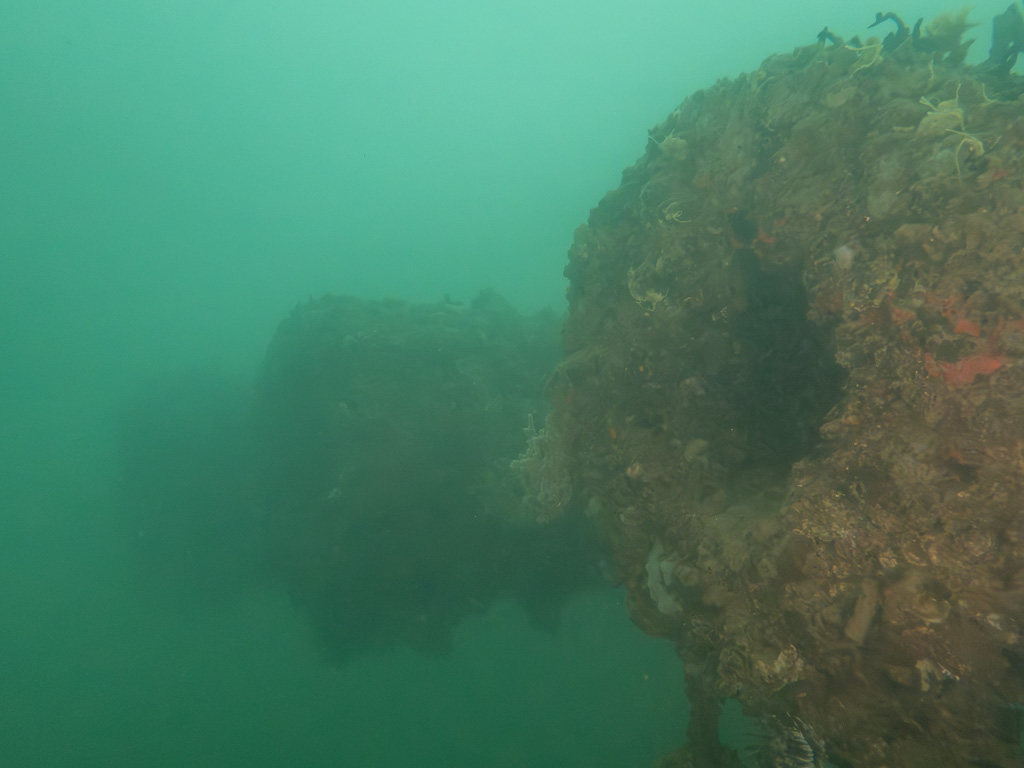I thought I’d seen some spectacular places in my life, but just my first hour in Hawaii changes my entire definition of spectacular. I arrive right before sunset, and between the sparkling blue of the ocean and the enormous volcanic mountains towering above me, I am the definition of a distracted driver. My rental car yells at me more than a few times that I am straying too close to the white line. But I can barely help myself! Every time I round a curve, I am met with impossibly vertical walls of lush green. O’ahu is like nothing I have ever experienced. As I drive, I am stunned, craning my head to stare open-mouthed at the mountains rushing up towards the sky.
As my host for the week, Stacey Tighe, 1980 Rolex Scholar, welcomes me into her home, she tells me that when it rains, she can often count over 15 waterfalls plummeting down between the ribbed sides of the mountains just behind her house. Throughout my stay, Stacey is the most welcoming and generous host I could ask for. She takes really good care of me after an unfortunate run-in with COVID, for which I will be forever grateful (thank you, Stacey!). My first morning on the island, Stacey informs me that some other OWUSS alums have a day of freediving and sailing planned, and I’m invited! I get to meet previous scholars Neha Acharya-Patel and Katie Lang, as well as former REEF intern Jessica Schem. I am also reunited with former NPS Intern Shaun Wolfe.
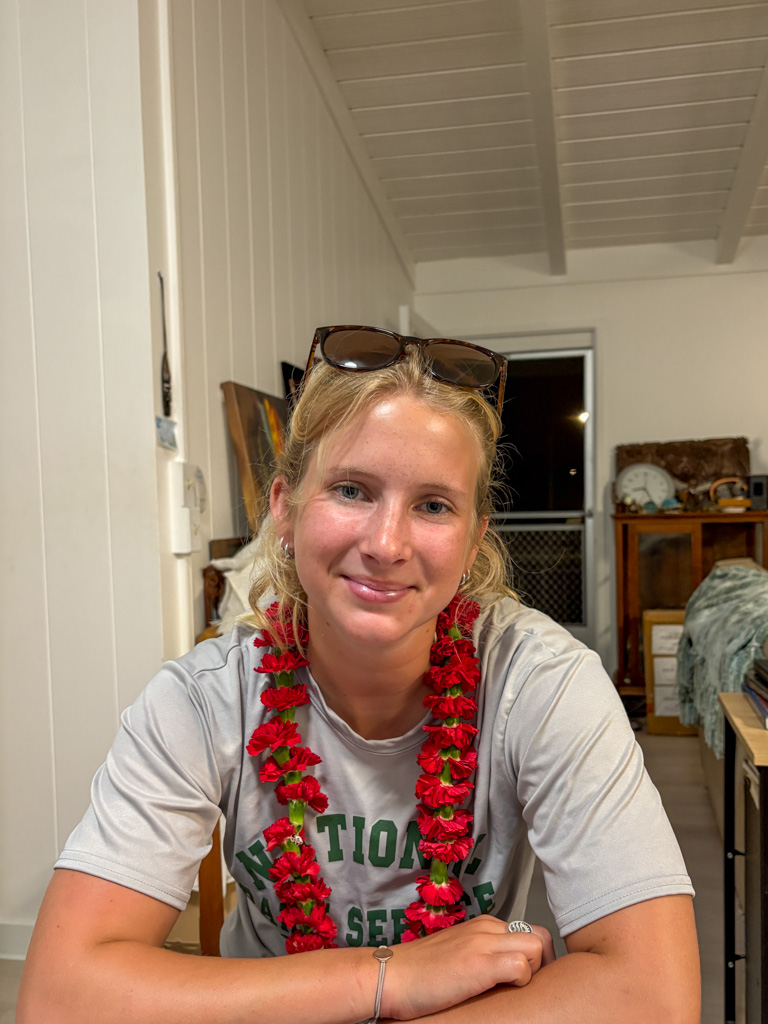
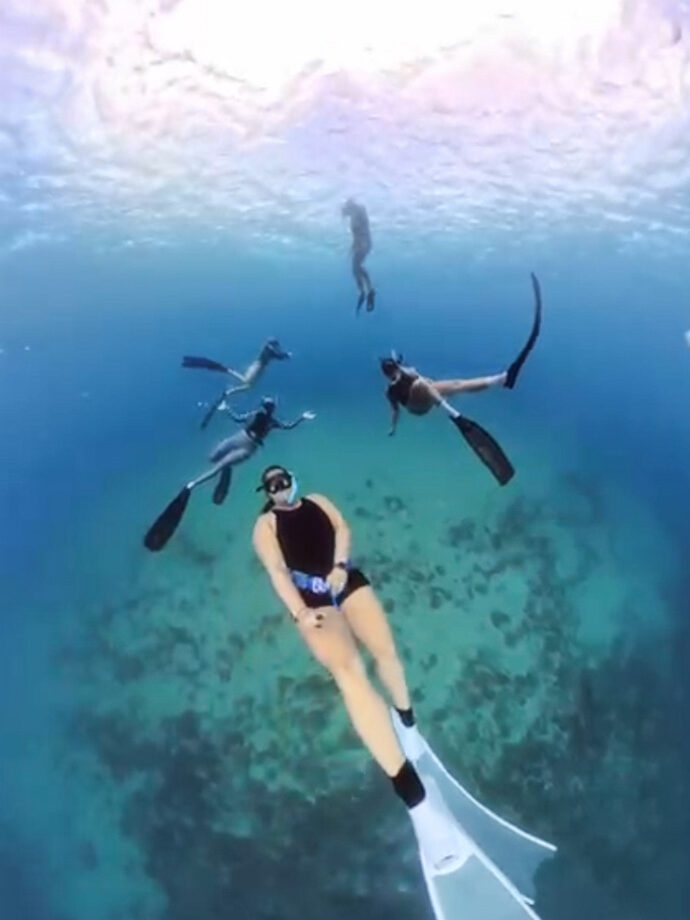
Our amazing day on the water starts with a pod of spinner dolphins who playfully cruise around the boat. When we hop in the water, the four or five I saw on the surface turn into more than 20 dolphins effortlessly gliding through the ocean. They aren’t moving too fast and hang out with us for a while, communicating in their clicks and whistles. This is the most personal encounter I’ve ever had with dolphins, and it was truly magical to get a peek at their fun times underwater. We spend the rest of the day freediving around The Eddie, which I’m told hosts one of the most prestigious surf competitions and monster waves in the winter. For now, it is deceptively flat and clear. This is also my first time getting to try freediving fins, and can I say… I am obsessed! I have pretty much the best day ever pretending to be a mermaid with all my new friends.
After a free-spirited day out on the water, the next morning is much more subdued. Monday, Law Enforcement Ranger and Park Dive Officer Andrew Tandberg takes me to dive the U.S.S. Arizona, the battleship that sank on December 7, 1941, in the attack on Pearl Harbor. Along with the ship, over 1,177 men made the ultimate sacrifice, accounting for almost half of the casualties of Pearl Harbor. December 7th marks an key turning point in U.S. history, and the Arizona continues to be an important symbol of the tragedy of WWII as well as the resilience of the American people. It also remains an archaeological wonder, with portholes containing trapped air from the day of its sinking, officers’ quarters with uniforms still on hangers, and bottles, bowls, and shoes remaining preserved on deck. It is a privilege to be able to dive this wreck, and I feel a wide range of emotions during my dive. I feel wonder at all the artifacts, grief for the families that lost a loved one, and gratitude for the sacrifice these men made and others continue to make for our country.
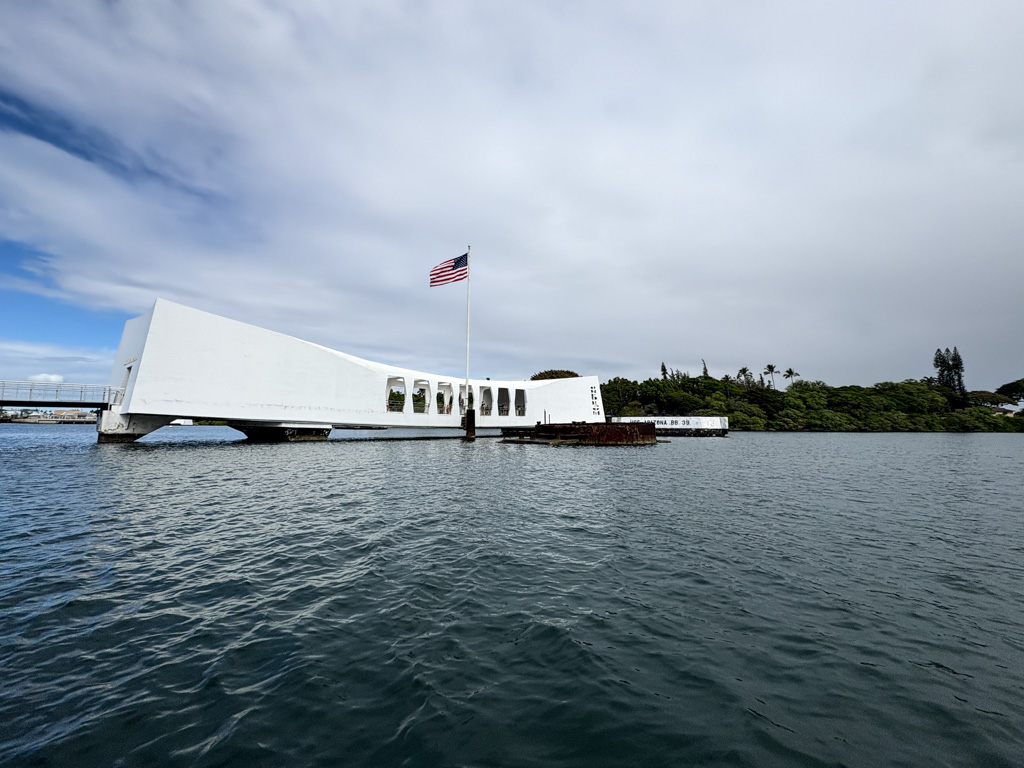
Andy gives me a topside briefing on what artifacts we will encounter on the ship, and I have a better understanding of what I am looking at as he points out bowls, kitchen tiles, ammo, forks, and, most jarring to me, shoes. I try not to dwell on things as we dive, and stay in the moment, ensuring I am a respectful visitor with controlled buoyancy, but after I surface, I spend a lot of time thinking about the shoes and why they happen to be scattered across the deck. Of all I saw on the Arizona, I feel that the shoes are the artifacts that most strongly connect me to the past and will stay with me long into the future.
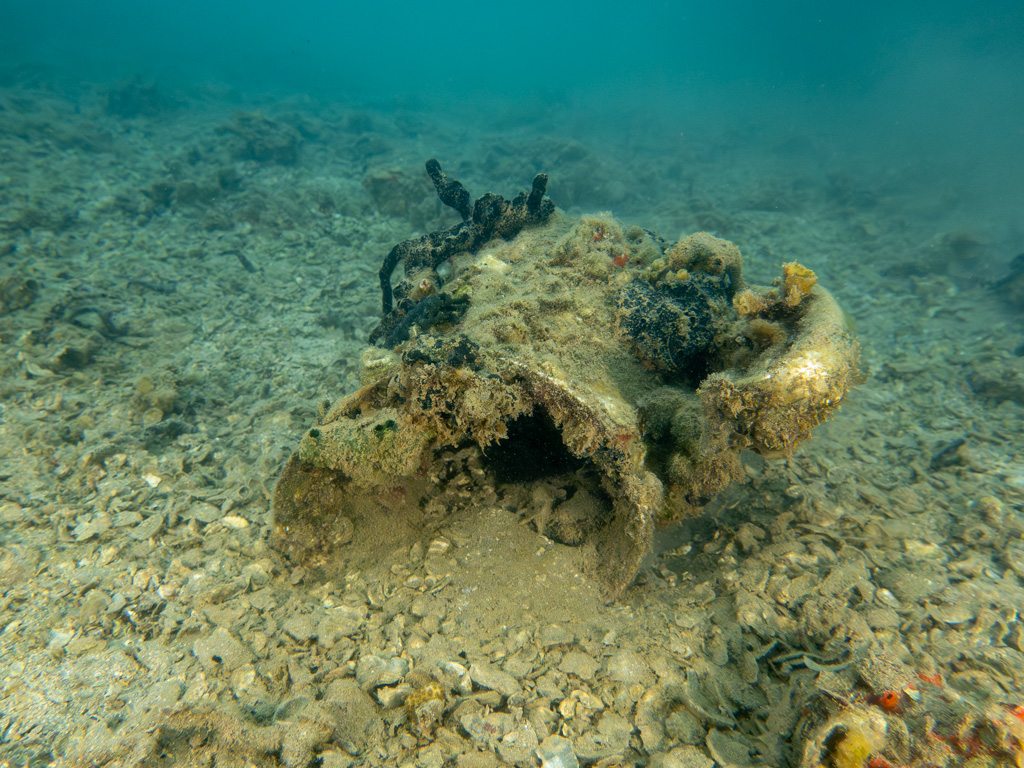
Even at the site of so much loss, there is life everywhere. Featherduster worms, encrusting sponges, and coral have made the U.S.S. Arizona their home, and even in the low visibility of the harbor, the ship is still beautiful in its own way. Sea cucumbers monopolize much of the deck, and as voracious grazers, they do their part to keep the ship clean and preserved. Even a sea turtle finds refuge inside one of the officer’s quarters and gives me quite a startle when I peer into a porthole and find him next to a chandelier.
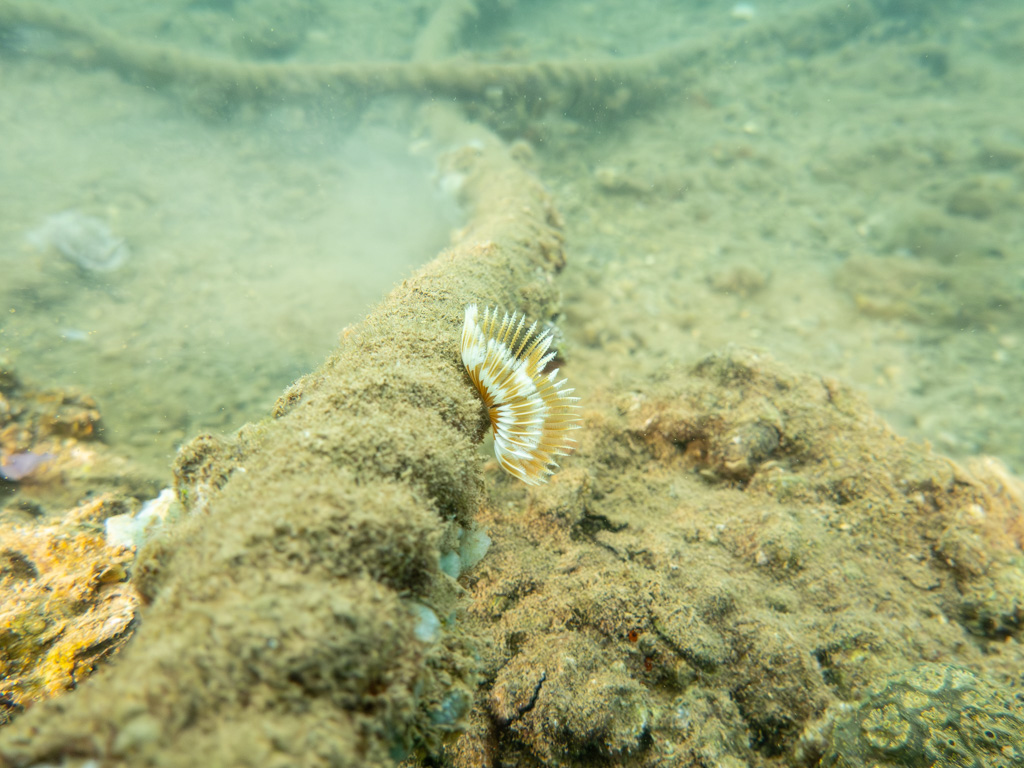
During our dive, Andy and I are looking for any debris that has been dropped by visitors from the memorial above us. Out of respect for the gravesite and preservation of the ship, it is important to remove anything that is not part of its December 7th history. We find two canes, a sunhat, sunglasses, as well as credit cards and hotel keys galore. At one point, we pass under the cutout in the bottom of the memorial and look up to see a myriad of faces, young and old, peering curiously at us. After having the distinctive experience of diving the U.S.S. Arizona, I’m glad to be able to remove the debris and contribute even in a small way to preserving a memorial that is so important to our history and our hearts.
